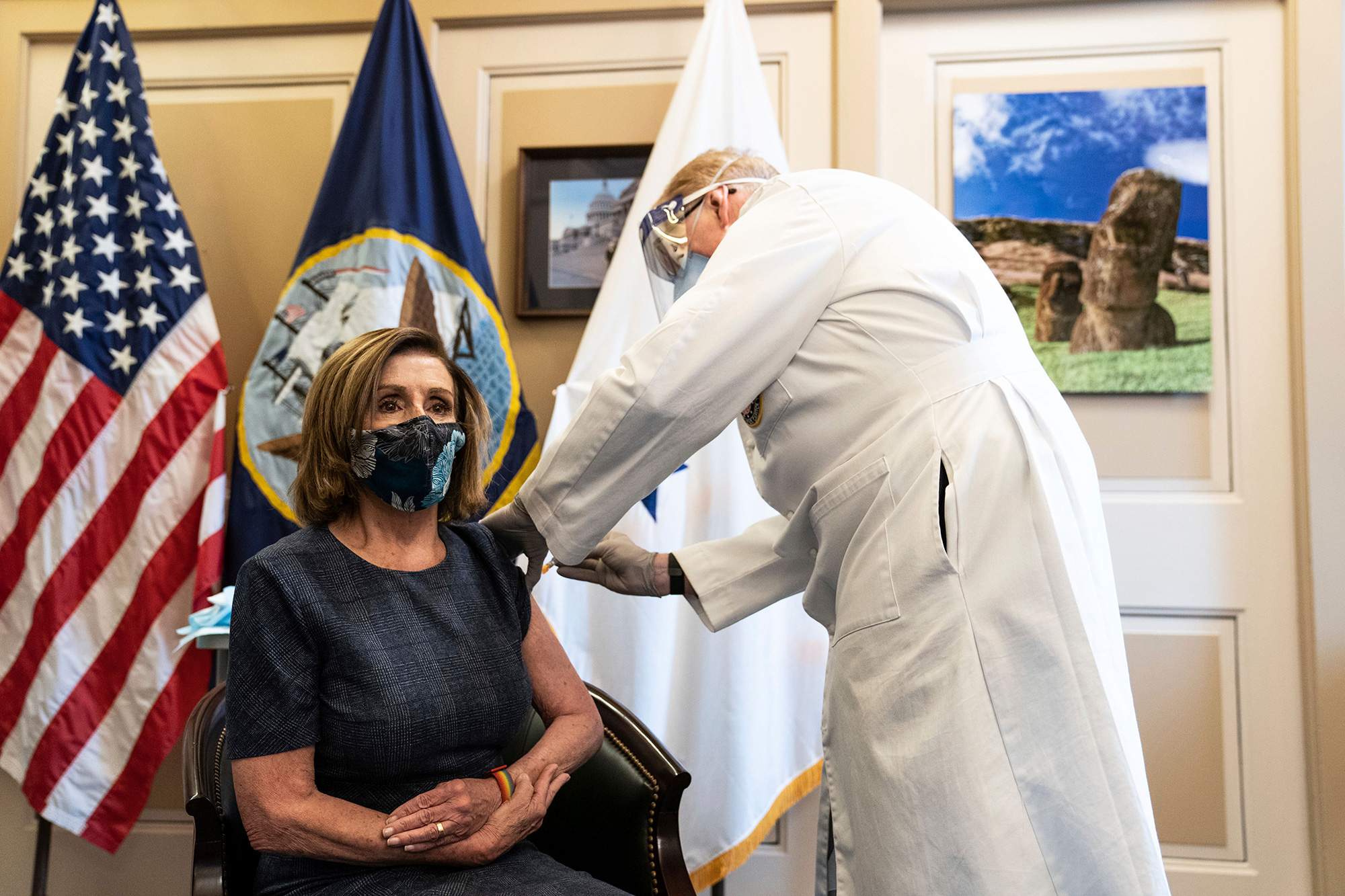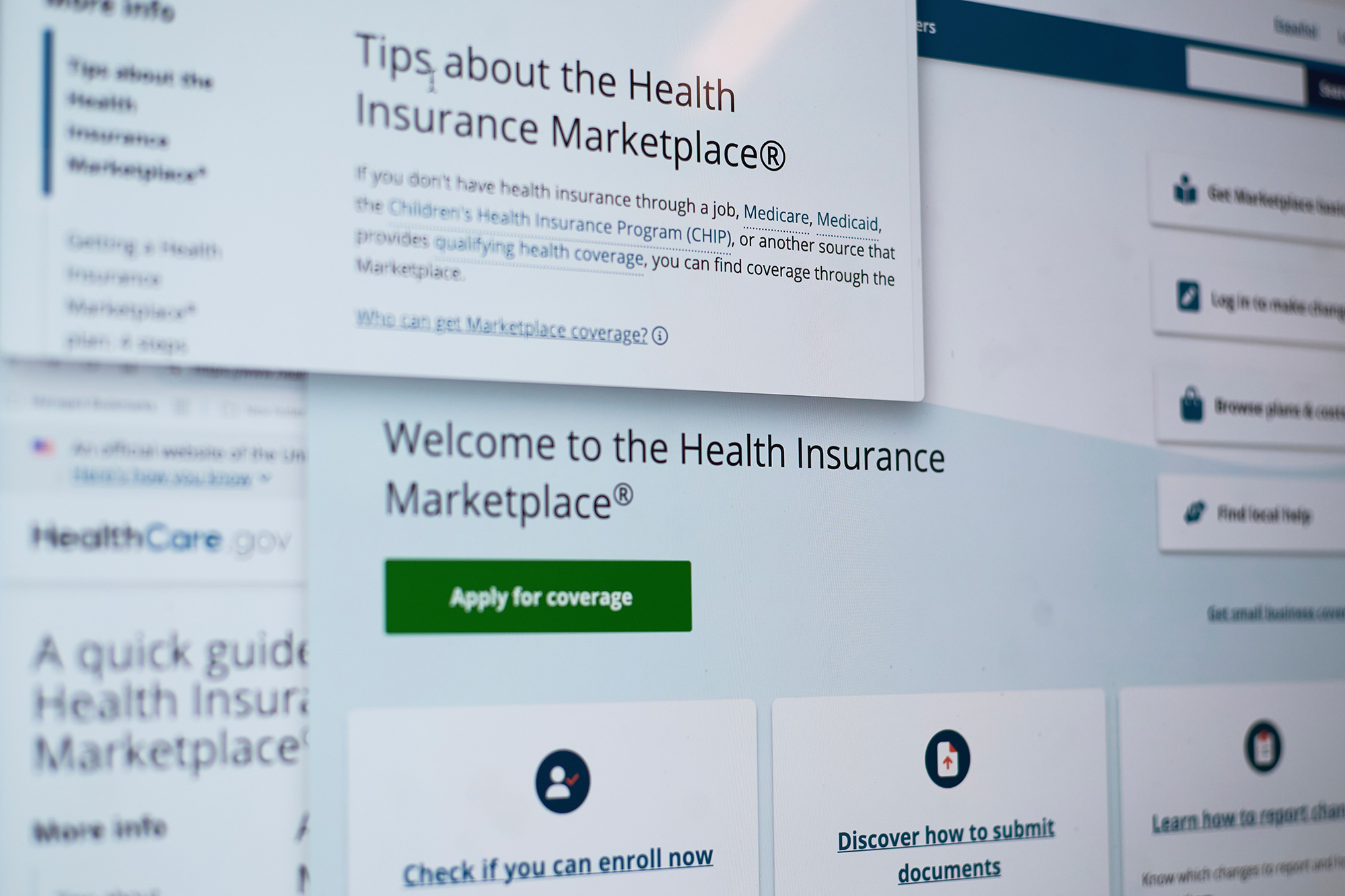A three-year chain of healthcare fights, missed budget deadlines, and partisan standoffs made this shutdown inevitable.
The federal government has shut down.
Already, taxpayers will owe $3.2 billion in backpay for federal employees who aren’t even working, over a million troops are serving without pay, and Air Traffic Control shortages have wrecked travel plans across the country.
And it’s only been a week.
Congressional Republicans and Democrats are trying to find a deal to reopen the government, but so far they’ve been more successful at pointing the finger than finding common ground.
What should be a simple discussion over government funding levels has turned into a battle over healthcare, immigration, and “rescissions” budget cuts.
Before we can find the path out of this shutdown, we need to look at how we got here. This in-depth timeline from No Labels will lay out exactly where this all came from.
March 11, 2021
While the shutdown officially started in October of this year, the groundwork was laid years ago.
In the thick of the pandemic, Congress passed the “American Rescue Plan,” a sweeping Covid-relief bill. It made changes to the Affordable Care Act, including “enhanced subsidies” that made more people eligible for reduced-price health insurance plans.
Those enhanced subsidies were set to expire at the end of 2022.
August 16, 2022
Just a couple of months before the ACA subsidies were set to expire, Congress passed another sweeping reconciliation bill called the Inflation Reduction Act that, among other things, extended the subsidies through December 31, 2025.
Today, Democrats are demanding those credits be extended again in exchange for voting to end the shutdown.
But the story doesn’t end there.
March 2024
Congress was supposed to sort out the 2024 spending bills over two years ago, by September 30, 2023.
Instead, they passed a series of short-term “continuing resolutions” to keep the government open while they worked on the full budget.
Finally, in March 2024, they came to an agreement on the annual spending bills. Those were designed to fund the government until September 30, 2024.
This was the last time Congress passed the required annual spending bills.
Later that year, Congress passed two more continuing resolutions to keep the government afloat until March 2025.
2025
March 14
As the March 2025 deadline approached, the odds of a government shutdown rose. Congress still didn’t have a new budget.
Despite immense pressure from left-wing Democrats, Senate Democratic Leader Chuck Schumer agreed to a deal to avoid a shutdown.
Congress passed a “full year continuing resolution,” which just extended the 2024 budget levels until the end of September.
That’s the funding that ran out last week, leading to the current shutdown. And that’s the funding Congress is trying to temporarily extend to November get out of the shutdown.
March 15-17
No good deed goes unpunished. Leader Schumer was widely criticized by his own party for making a deal to avoid a shutdown earlier this year.
- The left-wing activist group Indivisible called on Sen. Schumer to resign as Senate Democratic Leader.
- Rep. Alexandria Ocasio-Cortez called it a “huge slap in the face” and a “betrayal,” and progressives are urging her to primary Sen. Schumer.
- Sen. Schumer had to cancel his book tour due to security concerns.
This episode explains why Senate Democrats are less inclined to make a deal this time around. For most members of Congress, the primary is the only election that matters. And the voters that show up in primaries are usually on the far-left or right.
If voters on the extremes demand a shutdown, that’s what they’ll get.
July 4
This summer, Congress passed the One Big Beautiful Bill, a tax and spending package covering most of President Trump’s second term domestic agenda.
The bill included reforms to Medicaid, including work requirements, more frequent eligibility checks, and stricter citizenship verification requirements. Democrats are now demanding these changes be walked back before the government reopens.
July 24
Shortly after passing the contentious One Big Beautiful Bill, Republicans enacted a “rescissions” package. This is when the President claws back unspent funding after Congress had already approved it.
This move took back $9 billion in funding for foreign aid and for the Corporation for Public Broadcasting, which funds NPR and PBS.
Unlike most bills in the Senate, rescissions are not subject to the filibuster. One party can cancel government spending alone, even though it takes both parties to pass the spending to begin with.
This is when Senate Democrats began making shutdown threats. “It is absurd to expect Democrats to play along with funding the government if Republicans are just going to renege on a bipartisan agreement,” Leader Schumer said.
The White House was unfazed. Russ Vought, director of the Office of Management and Budget, said the “appropriations process has to be less bipartisan,” adding that “it’s not going to keep me up at night, and I think will lead to better results” if Democrats are shut out from the budget discussions.
August 28
By this point, Republicans showed no interest in undoing the changes to Medicaid or the rescissions. In fact, President Trump was even floating “pocket rescissions” – an obscure way to cut government spending without even holding a vote in Congress.
It was clear where things were headed.
On August 28, No Labels’ Chief Strategist Ryan Clancy published an article in The Hill titled “7 Reasons A Government Shutdown Is Likely This Fall.”
In it, he detailed the “perfect storm” approaching Washington: the limited time left to make a deal, the rescissions, the backlash Sen. Schumer faced in March, pressure from far-right House Republicans to not cut a deal, a president who isn’t afraid of shutdowns, the partisan blame game, and the broken budgeting process.
“It doesn’t have to happen. Congress can still step up and do its most fundamental job by funding the government on time,” Clancy wrote.
But Congress didn’t listen.
August 29
The day after Ryan Clancy warned about an impending shutdown, President Trump followed through with the threatened “pocket rescissions. “
This package clawed back nearly $5 billion in spending from foreign aid programs, with no vote in Congress. It was by far the largest pocket rescission in history, and the first in nearly 50 years.
At this point, it seemed the die was cast and a shutdown was inevitable.
September 19
Shortly before the deadline, the House passed a continuing resolution (CR) to keep the government open until the November 21.
Only one Democrat, Rep. Jared Golden, voted for the CR. Another Democrat, Rep. Marie Gluesenkamp Perez, missed the vote but announced her support for the CR.
The House went home for recess to observe the Rosh Hashanah holiday. They have yet to come back.
The bill went to the Senate that same day, where it was promptly blocked by all Senate Democrats except Sen. John Fetterman.
Also that same day, Sen. Patty Murray introduced the Democrats’ CR which would fund the government until October 31, permanently extend the ACA credits, undo the Medicaid changes, and undo the rescissions. All Senate Republicans blocked it.
September 30
Deadline day. At 6:40PM, the Senate once again voted on the House-passed CR. It failed. Only three members of the Democratic caucus – Sens. Catherine Cortez Masto, John Fetterman, and Angus King – joined Republicans in voting for it. The final tally was five votes short of the 60 needed to pass.
Afterwards, the Senate voted on the Democratic-sponsored CR. It failed again, with no Republican votes.
October 1
At 12:01AM, the federal government shut down.
That day, 750,000 federal workers got sent home. Another 400,000 federal employees and 1.3 million military members continued to work without pay.
The White House froze $26 billion in grants to blue states like New York and California to raise the pressure on Congressional Democrats to end the shutdown.
October 1 – 7
On three occasions in the first week of the shutdown, the Senate tried to pass both the Republican and Democratic versions of the CR. Each time with the same result: three Democrats crossed the aisle, no Republicans voted for the Democratic version.
The House remained in recess.
The shutdown’s effects began to be felt wider.
- Air Traffic Controller shortages caused travel delays, including a ground stop of all flights into Nashville and closing the tower in Burbank, CA. Houston’s airports could face a ground stop as well.
- Several telehealth programs were put on hold, and patients’ appointments were canceled.
- Nine national parks are fully or partially closed, and more could join them in the coming days.
- The White House circulated a memo suggesting federal employees would not get backpay when the shutdown ends.
Upcoming Missed Paydays
The first missed paychecks will be Friday, October 10, when U.S. Capitol Police officers – who are still showing up to work – will be denied their hard-earned paychecks. The Capitol Police union worries a missed paycheck will lead to more officers retiring or quitting, further straining the department.
Military members are supposed to get paid Wednesday, October 15. Unless Congress acts soon, those paychecks won’t get sent out.
This would take a toll not just on the 1.3 million active-duty troops, but also their 560,000 spouses and 890,000 children. Nearly half of military families struggle to make ends meet, and a quarter have had trouble affording food – even after all the sacrifices they’ve already made serving our country.
Federal workers in other departments – including Veterans Affairs, Homeland Security, Justice, and Agriculture – will miss paychecks on Fridays October 17, 24, and 31.
But on November 1, whether they’ve voted to end the shutdown or not, all 535 members of Congress will get paid in full and on time.
Related
Peyton Lofton
Peyton Lofton is Senior Policy Analyst at No Labels and has spent his career writing for the common sense majority. His work has appeared in the Washington Examiner, RealClearPolicy, and the South Florida Sun Sentinel. Peyton holds a degree in political science from Tulane University.




